
views
Spray the lock with WD-40.
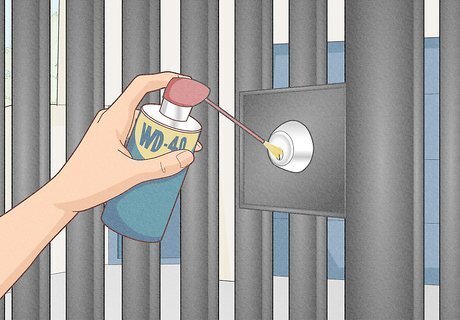
This lubricant keeps water out of any lock to prevent freezing. If you’re expecting a cold snap or snowstorm, squirt some WD-40 into the lock. For cold winters, spray all locks 1-2 times per week to keep them in good, working order. This only works if you get the lubricant inside the lock. Get the nozzle right up to the lock opening and give it a good squirt. You could also use this trick for combination locks. Spray any openings so the lubricant gets into the lock mechanism.
Try graphite spray.
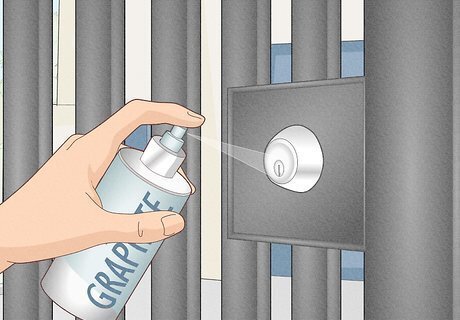
Graphite is similar to WD-40, but doesn't have the same harsh odor. If you want a lock lubricant that won't stink up your car or home, then this is a great choice. Graphite tends to work a bit better on car locks, so give this a try if WD-40 hasn't done the trick for you. Like with WD-40, spray your locks regularly with graphite during the winter to prevent freezing.
Smear some petroleum jelly on the lock.
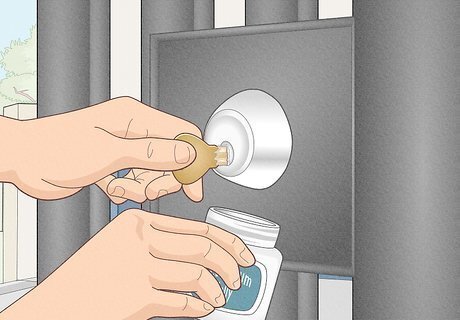
Petroleum jelly blocks moisture from getting into the lock. Smear some onto your key, then insert it into the lock and shake it around a bit to coat the inner lock mechanism. Repeat this a few times throughout the winter to keep the lock lubricated and moisture-free. This trick is a good replacement if you don’t have WD-40 or a similar lubricant. This trick won't work for combination locks, since you can't use a key to coat the interior. Petroleum jelly could also loosen the lock if it does freeze. Coat the key in it and slide it into the lock to see if you can open it.
Spray compressed air into the lock.

The air blasts moisture out of the lock. Use a compressed air can, like you’d use to clean your computer screen. Put the nozzle right up to any lock and give it a good spray. With the moisture blasted out, the lock is less likely to freeze or seize up. This is only a short-term solution, since it doesn’t actually prevent moisture from getting into the lock. It’s best to follow-up with a lubricant or covering so moisture doesn’t get back inside the lock.
Cover the lock opening with a magnet.
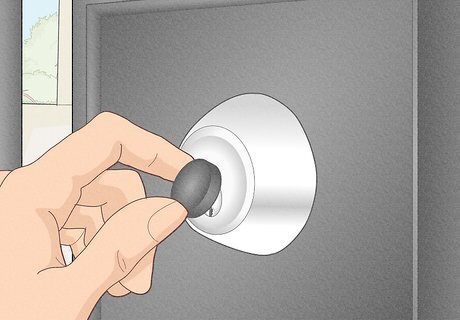
This simple trick can keep the lock dry when it’s cold. Get a strong magnet and stick it to the lock opening. Make sure it covers the entire opening so moisture can’t sneak in. When you’re ready to open the lock, just pop the magnet off and slide the key in normally. This is a good way to follow-up with a compressed air treatment, since it stops more moisture from getting in the lock. It’s also a good trick for car locks. You can keep the magnet in your glove box and pop it onto your lock when you know it’ll be cold.
Wrap padlocks in socks.
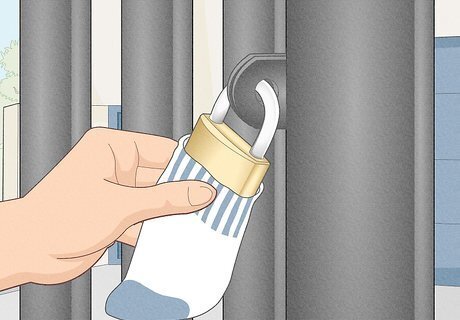
Use a thick sock, preferably wool, to prevent water from getting inside. Slip it over the lock and twist it so it’s tight and snug. Then tie the sock into a knot so it doesn’t fall off. This works best along with another method, like lubrication. The sock alone might not be warm enough to stop water from freezing, especially in a cold area. Make sure the sock is totally dry! If it gets wet, it could freeze around the lock and then you'll really be out of luck. This trick won’t work for door or car locks. The sock has to wrap around the lock entirely to keep it warm enough.
Switch to weatherproof padlocks.

Some padlocks are specifically designed to resist freezing. Look for a high-quality weatherproof lock, preferably with a plastic casing that blocks moisture. These can resist the cold better than regular locks. Weatherproof locks aren’t guaranteed to not freeze. They just resist freezing better than normal locks.
Dip your key in hand sanitizer to melt ice.
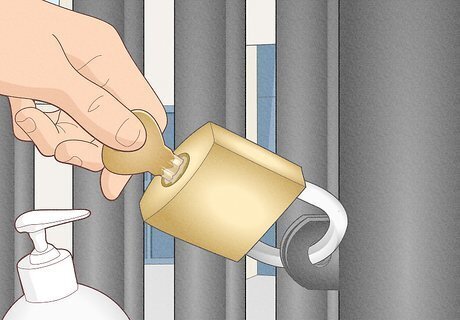
You’re not out of luck if your lock does freeze. Simply rub some hand sanitizer on the key and slide it into the lock. Shake it back and forth a few times, then try to turn the key. The alcohol in the hand sanitizer should melt the ice and free the lock. There are also lock de-icing sprays that you can use to loosen a frozen lock. They work a bit better, but are more expensive.



















Comments
0 comment